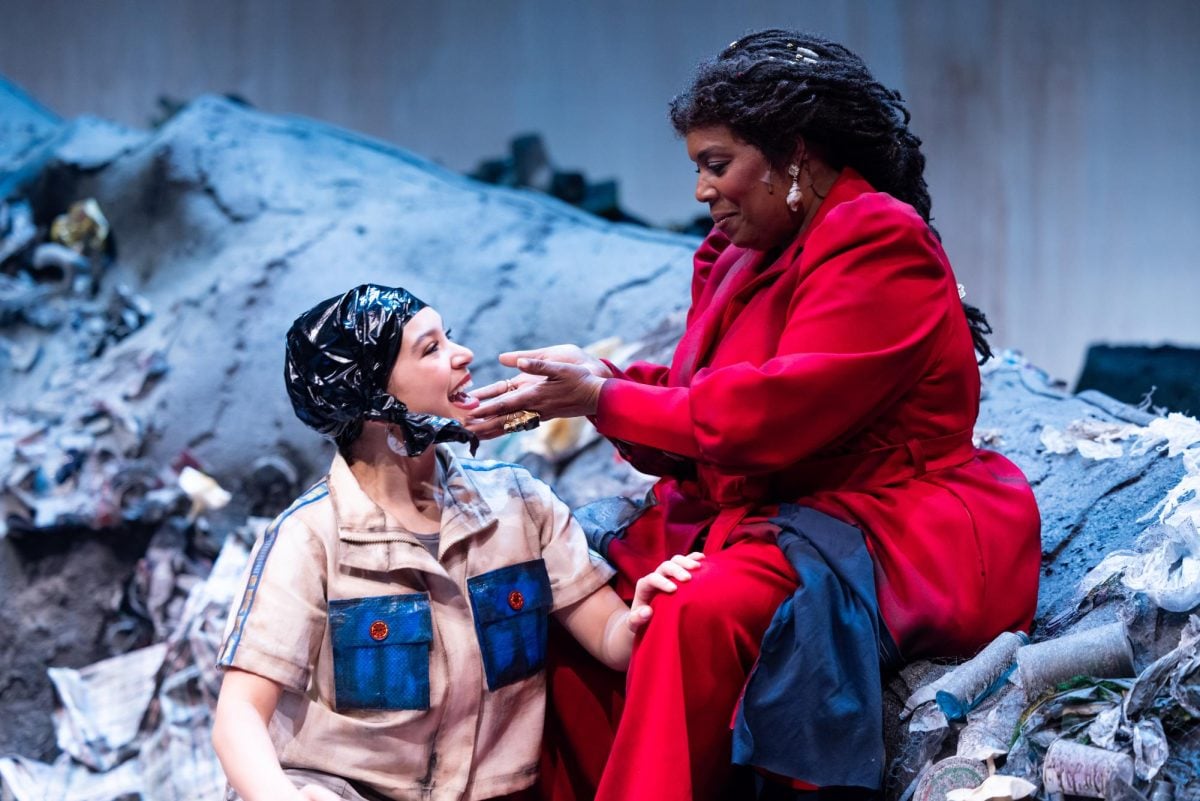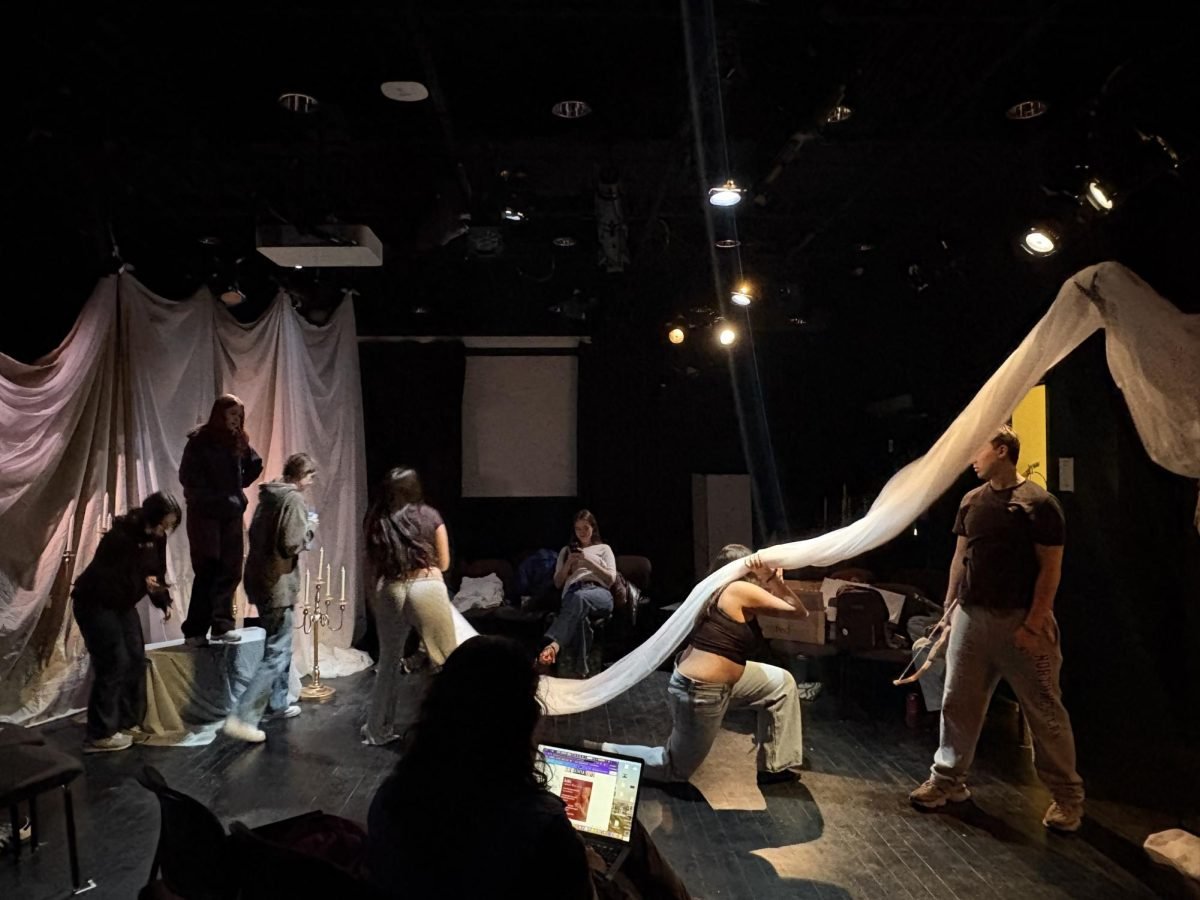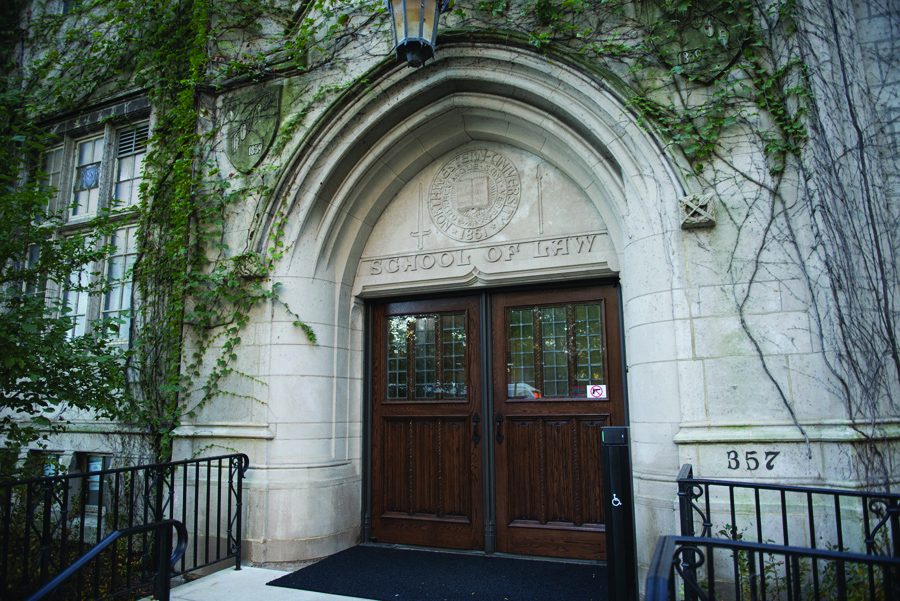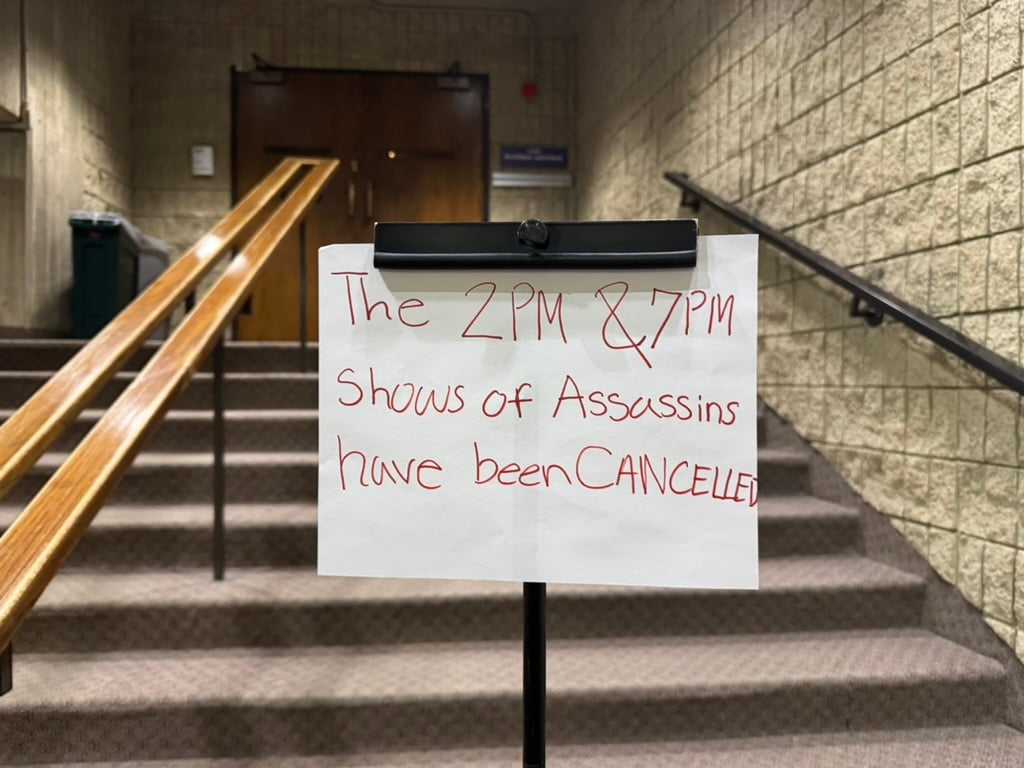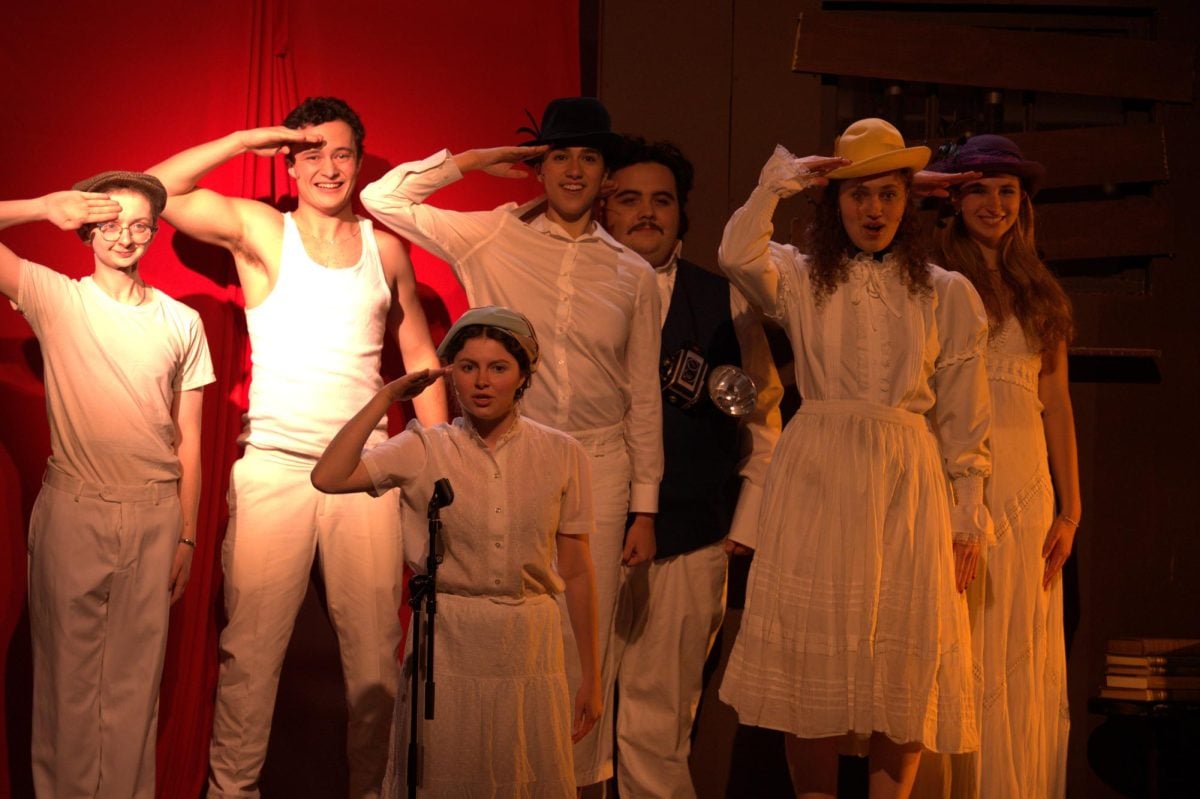With her version of “The Tempest,” third-year directing graduate student Manna-Symone Middlebrooks offered audiences a newly imagined, contemporary version of Shakespeare’s classic at The Wirtz Center on Friday. The show opened on May 17 and will run until May 26.
Middlebrooks crafted this staging of “The Tempest” for her MFA thesis. She said the play, which follows exile Duke Prospero as he seeks justice from those who wronged him and his daughter Miranda seeks love, is about leaving toxic systems behind and linking justice with love.
“My invitation to anyone who chooses to go on this journey with us is to be willing to wade through the darkness, to push against the trashy limits of liberation, to imagine a thriving natural world where we are all free and to take that step into that future together,” Middlebrooks said.
Middlebrooks approached Communication Prof. Detra Payne to play Prospero. Payne put her own spin on the role as a Black woman playing a traditionally white male character.
Payne said she was nervous about joining the project but took the opportunity to push herself and support a new up-and-coming Black female director.
“When I was (an) undergraduate, I loved (Shakespeare) and wanted to do it and was in classes and everything, but my teachers at the time did not see me in these roles because I am Black and female,” Payne said.
Payne said that for the character of Prospero, she took influences from Christopher Plummer, who played Prospero in the Stratford Festival, and “Black women who embody strength” like Michelle Obama.
Payne said the gender swapping of many of the roles, like Prospero, in the production changed some of the dynamics between the characters.
“It’s a mother who’s protecting her child and trying to take care of her child and get back to the homeland for many reasons,” Payne said.
One of Prospero’s enemies is the king Alonso, who is concerned with the well-being of his son.
Communication senior and actor North Hinze (Alonso) said that the character navigates his relationships with his extended family and the loss of a family member.
“(Alsonso) starts pretty much at the beginning, thinking, ‘I might have just lost everything I’ve ever had and cared about,’ and he has no idea if he can get any of it back,” Hinze said.
Communication junior Isadora Coco Gonzalez (Miranda) said she loved working with Middlebrooks because she fostered an environment of care, respect, growth and learning.
Gonzalez said Middlebrooks spent a lot of time with the cast digging into and unpacking their characters. The cross-casting created a cast that is more representative of today’s world, she said.
“Because the character of Prospero is played by a Black woman, a lot of the traditional characteristic traits of my character have shifted,” Gonzalez said. “Miranda is a lot more fierce and strong-willed and has a lot more power in the show.”
Bottles, cans and plastic bags littered “The Tempest” set, inspired by trash piles in the ocean.
All the characters who lived on the island wore garnets that featured mismatched cloth and trash while the characters that were shipwrecked on the island wore modern business clothing.
The production included musical interludes, which is not typical for “The Tempest” productions. In particular, whenever Prospero did magic, it was accompanied by a musical theme.
Communication freshman Dillon Nashelsky, who attended the show on Friday, said he thought Middlebrooks’s retelling of “The Tempest” was beautiful. He said he particularly enjoyed the integration of music into the production.
“It was performed on stage with the beautiful allusions to realism and corruption of nature,” Nashelsky said. “The power dynamics both in gender and race have been reshaped through this telling.”
Email: ninethkanieskikoso2027@u.northwestern.edu
Related Stories:
— Lovers & Madmen’s ‘A Midsummer Night’s Dream’ celebrates spring on the Lakefill
— Red Theater’s ‘Hamlet’ embarks on poignant emotional journey
— ‘The Great Sea Serpent’ incorporates research, physical storytelling for multidimensional play

